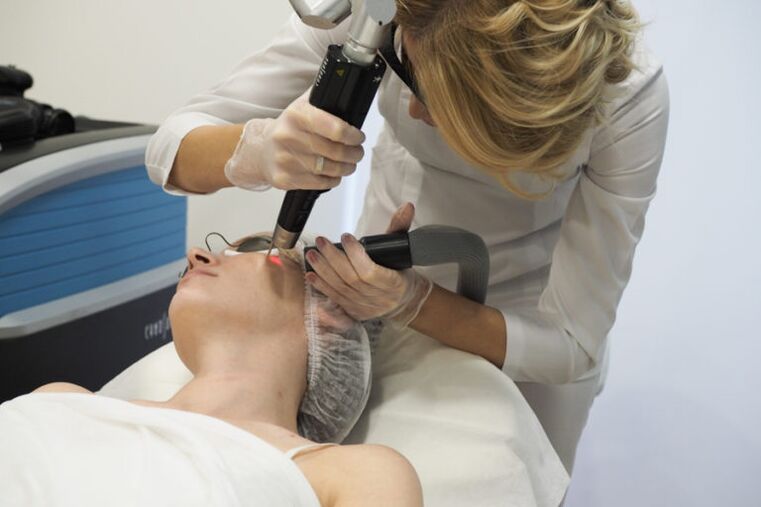Laser rejuvenation is a scientifically proven effective technique. The beneficial effects of lasers on specific target molecules have been scientifically proven and tested many times.
Laser rejuvenation is a procedure shrouded in many myths. Some say that it is great for helping deal with many skin problems, while others doubt that it is not. Moreover, it is not the fact that one or the other actually underwent a laser, and it is not an IPL procedure. So what exactly? Does laser rejuvenation help or not?
Rejuvenation, what can a laser do?
Laser treatment is the effect on the skin of such light rays, which are only absorbed by certain molecules. Ia:
- intracellular and extracellular water - for CO2 lasers;
- oxyhemoglobin, collagen and elastin proteins - for neodymium lasers;
- hemoglobin and melanin - for laser dyeing;
- melanin - for laser diodes and alexandrite.
By absorbing light, the desired molecules convert it to heat and, under the influence of the latter, decompose. This includes in the skin the same reaction that occurs to injury, as a result, it begins to build up the missing elements. New cells, new proteins of the skin’s 3D framework are synthesized - integumentary tissue is tightened, smoothed, and radiation returns to it.
If the laser beam is a beam, with a distance between beams (fractional technique), then a micro depression appears on the skin. Tissue tries to connect the edges of these grooves - and thus the area of scars and stretch marks is reduced. And when cells that contain the pigment melanin (whose accumulation leads to the appearance of age spots) are heated, the natural dye is excreted by the lymphatic system.
The effects described are typical for any type of laser. But this is where rejuvenation ends only with CO2 lasers. Neodymium lasers and dyes can also remove any visible vessels: rosacea, dilated veins, wine stains, spider veins.
Will there be no effect?
Laser rejuvenation is a scientifically based technique, it cannot be without effects. Let’s explain: any laser target molecule is present in our skin. We form collagen and elastin, otherwise the skin will not be able to be on the surface, but will slide down. We also have hemoglobin with oxyhemoglobin in our ducts - otherwise, how will the skin be preserved. Maybe, maybe, don’t have melanin - but this is only in people with albinism.
The effect of lasers on specific targets has been scientifically proven and tested many times. This is not a blind introduction of the drug - just focusing on the external signs of hyaluronic acid or collagen deficiency. This is the launch of aseptic (non-microbial) inflammation on the skin, the answer is always the same: the production of new elements.
Is laser rejuvenation painful?
Not always. If the procedure is performed using a CO2 laser, which evaporates the skin column, then anesthesia is required - up to general anesthesia. If you use rejuvenation with a neodymium laser, the procedure is almost painless, because there is no trauma to the epidermis, and impulses are sent not near the nerve endings, but into micro -channels.

If you undergo the procedure on a picosecond alexandrite laser, which sends impulses under the skin 100 times shorter than on other devices, then there will be no pain at all. why? The fact is that with such a short pulse period, warming does not occur - that is, it is the cause of pain.
How does rejuvenation happen? Pulses a few picoseconds long have a mechanical effect (micro -explosion of skin scaffolding proteins). This triggers the formation of certain substances - cytokines, which send information from one cell to another. They support the process of skin remodeling for a long time.
























